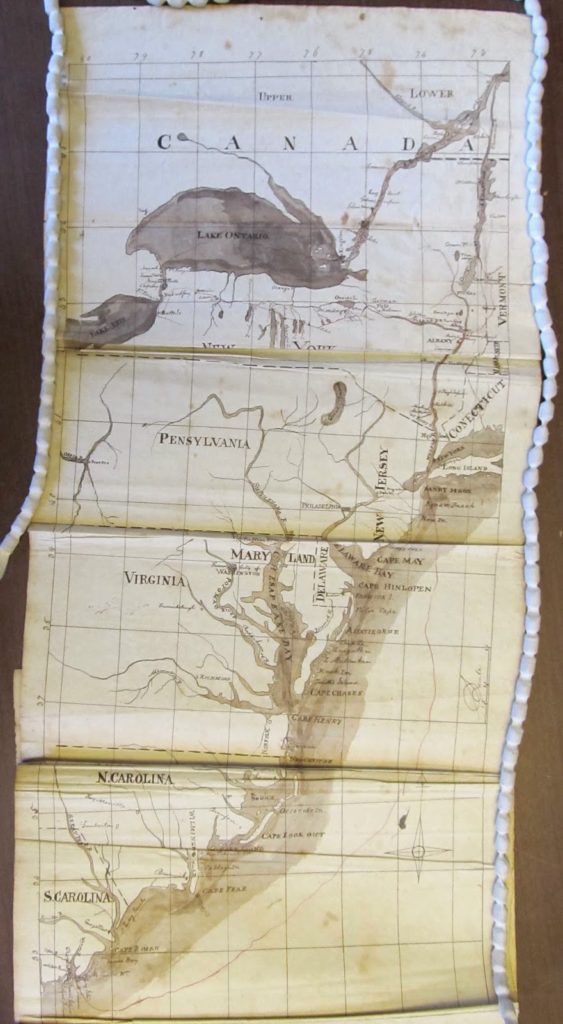man makes his way from Charleston to New York, then winds around Lake Ontario
and Southern Canada. His adventures recall the excitement and the trials of
modern travel: at one point he gets sick, and reluctantly stays in his room
while friends go out and tell him about their day.
from Charleston, So. Carolina, to New-York, Ballstown Springs, Falls of
Niagara, down Lake Ontario and the River St. Laurence to Montreal; and the
course of returning by Lake Champlain Vermont and New York in the year 1806
in the Rosenbach library because of one of the final destinations it mentions:
Montreal. I’m Emily, a curatorial intern at the Rosenbach this spring and a
graduate student of material culture. I did my undergraduate degree in
Montreal, and thought I might explore the city again from afar through the lens
of 1806.
anonymous writer pasted in a folded hand-drawn map at the end of the book. A
shaky red line notes the travel path, sweeping across many miles on land and
water. At the top right corner of the map is Montreal, marking the uppermost
part of the loop traveled.
 |
| Journal of a tour from Charleston… 1806. AMs 227/19 Rosenbach of the Free Library of Philadelphia |
the possible mix-ups and amusements of visiting a bilingual city. “Upon first
going out, I witnessed a curious effect of the diversity of language. I was
lead through the marketplace, where my attention was caught by a laughable
bargain going forward by interpretation.” A conversation is conducted between a
French-speaking farmer and English-speaking ship captain, where the farmer was
not receiving the price that he desired for his produce. “The greatest obstacle
of the bargain was a command, which the farmer had received from “ma femme,” an
authority which the waggish interpreter did not fail to enlarge upon in both
the respects of length and loudness.”
 |
| Journal of a tour from Charleston… 1806. AMs 227/19 Rosenbach of the Free Library of Philadelphia |
Language was but one element of Montreal’s character that
the writer explains to his unknown audience, perhaps family or his own future
reference. His facts may have come from other books, or tips from the
acquaintances he made while paying visits to local homes. He explains that the
population was around 12,000 people, mostly of French origin, and that the
architecture was largely black colored stone placed on narrow streets. He lauds
great public edifices, including a courthouse and a large cathedral, and
describes the terrain of the island and mountain that he says gave the city its
name.
Montreal. He writes “The greatest objects
of curiosity, which Montreal afforded, in my estimation, were the convents, but
most of my acquaintance being Protestants, we had been several days in the city
without finding any person who had the influence to procure admission.” Finally
meeting some amenable hosts and former convent school pupils at a dinner, he is
able to see three convents.
 |
| Journal of a tour from Charleston… 1806. AMs 227/19 Rosenbach of the Free Library of Philadelphia |
see living quarters, schools, and hospitals administrated within the buildings.
During one tour, the narrator, evidently becoming quite comfortable with his
host from the dinner, says “I saw an oblong box, resembling a projecting
closet; and, addressing my informant, asked, if so small a space could contain
all her sins.” Laughing, the two leave the confessional space and attend a
final convent visit. The writer, after finding a few last meals and
conversations, eventually leaves Montreal and makes his way slowly back to
Charleston.
spring and a graduate student in the Winterthur Program in American
Material Culture at the University of Delaware.
